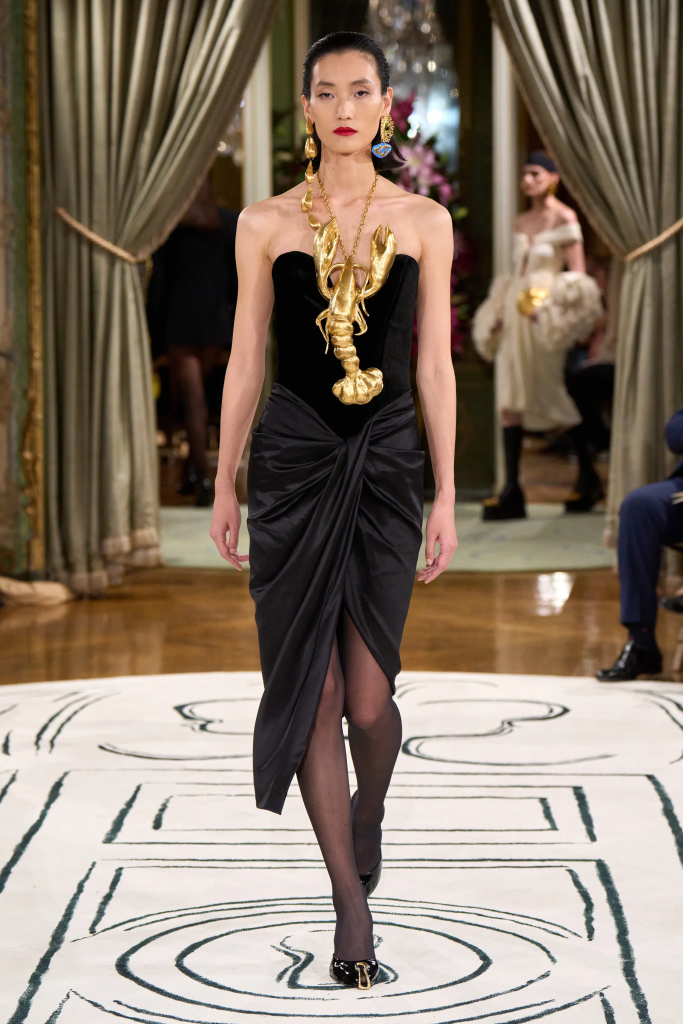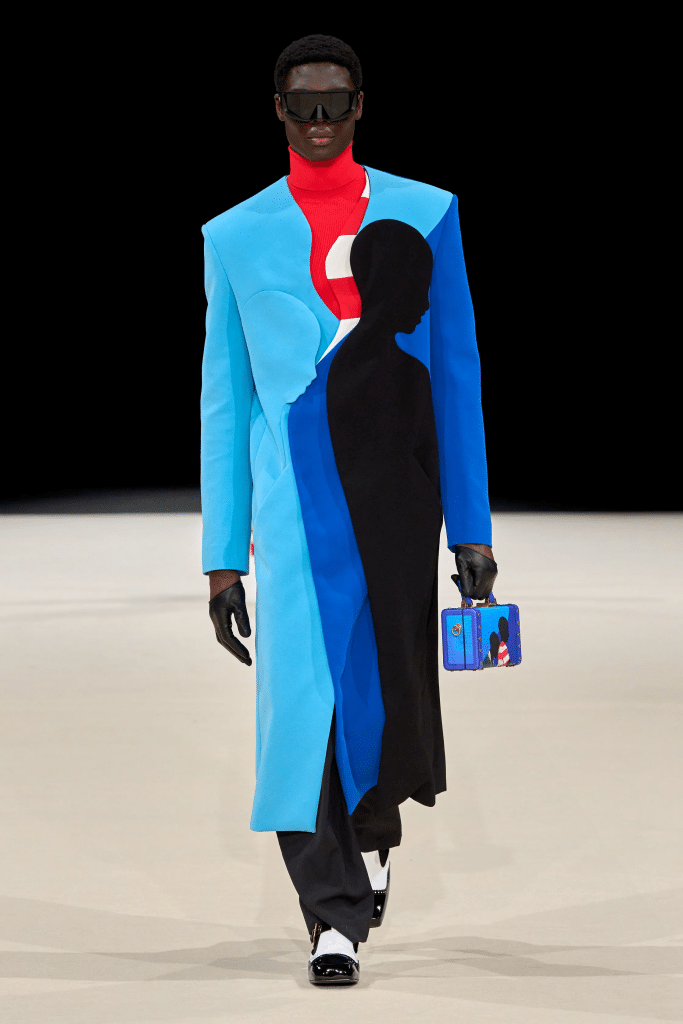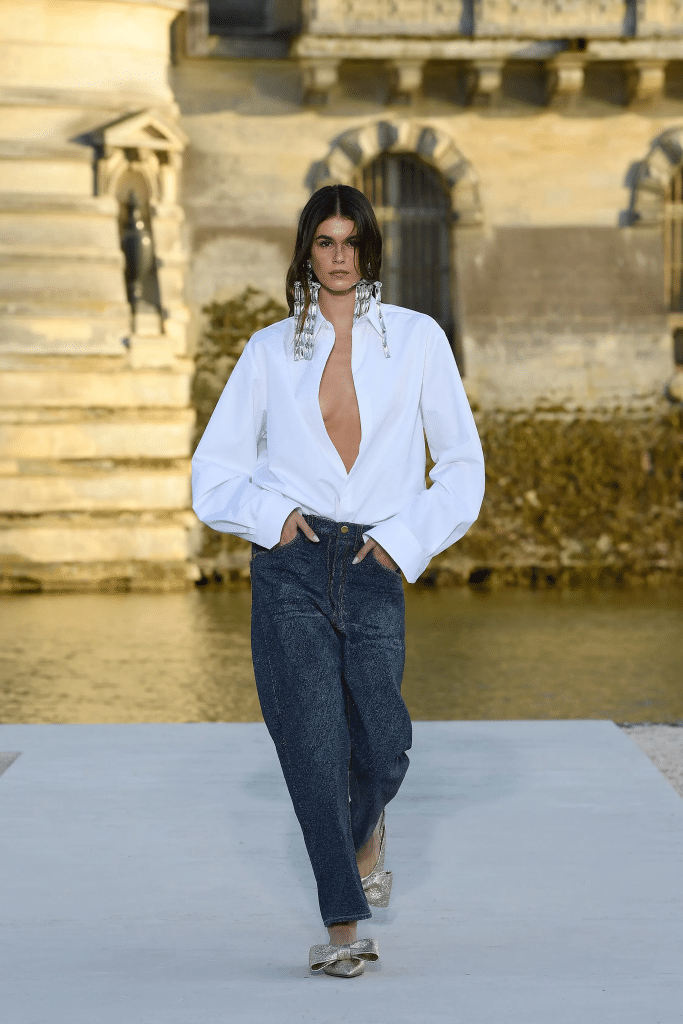Story HANG NGA
Photos INTERNET
The relationship between art and fashion is filled with enchantment.

Getting surreal
Many designers have recently drawn inspiration from the symbolic and dreamlike Surrealist art movement for their seasonal collections. At a time when the quiet luxury trend has changed attitudes about ostentatious displays of brand logos, Surrealism helps labels assert a cultural foundation and create an individual mark.
Schiaparelli has been at the forefront of this relationship, with homages to Surrealist artists Freud, Klein and Miró, throughout recent collections, alongside gilded breastplates and tailoring adorned with golden body parts. JW Anderson has also found success with a Surrealism synthesis, creating a cult obsession with a pigeon-shaped clutch in 2022.
Surrealism in fashion embodies escapism and dreamy poeticism, utilizing multi-layered structures, and visual illusion techniques to create eye-catching and imaginative designs.

The cubist movement
The Cubist movement has also significantly influenced fashion, with icons like Coco Chanel, Paul Poiret, and Madeleine Vionnet pioneering the integration of geometric shapes and patterns into clothing designs. This creative fusion has seen a revival in the fashion industry of transforming art motifs into contemporary trends.
CHANEL’s Spring 2021 collection pays tribute to Picasso and Braque’s iconic styles with black and white geometric forms, while Jeremy Scott’s Spring 2020 collection for Moschino embraced Picasso’s legacy. Fashion’s symbiotic relationship with art democratizes creativity, making it accessible to all, while art instills uniqueness and diversity, ensuring trendiness remains timeless.

Painting and fashion
The convergence of painting and fashion has yielded vibrant creative energy on countless occasions. The “fashion is art” movement, originating in the 1960s, combines painting and fashion to create a unique art form that focuses on the contours of the human body, transforming the way people view fashion and integrating it into popular culture.
Luxury fashion houses have incorporated artists like Salvador Dalí into their designs, as seen in Elsa Schiaparelli’s iconic Lobster dress. Damien Hirst created iconic imagery in Alexander McQueen’s designs, while Louis Vuitton collaborated with Yayoi Kusama for playful polka-dot variations on iconic bags.
This blend requires designers to tread the delicate balance between patterns and practicality. They must meticulously weave together prints, paint colors, materials and structural elements to elevate garments into wearable works of art.

Art of embellishment
The art of embellishment plays a pivotal role in the evolution of fashion. Simple accentuated patterns of the past have now blossomed into a canvas where artists adorn clothing with entire paintings or create optical illusions that beguile the eye.
The Valentino Spring 2023 high-fashion runway show featured a pair of jeans made entirely from gazar silk, crafted from tiny beads dyed in 80 indigo blue shades. Assembling them took thousands of hours to create the illusion of denim fabric.
The Balmain and Loewe Fall/Winter 2024 collections showcased captivating embellished pieces. Notably, Maximilian Davis’s fish scale dress, seemingly sequined, was made of thousands of glossy leather pieces sensuously hugging the body’s contours. These examples highlight the influence of high-end craftsmanship and artistry in the fashion industry.










